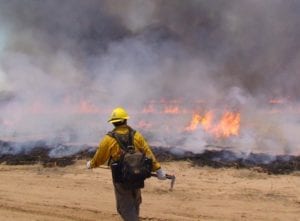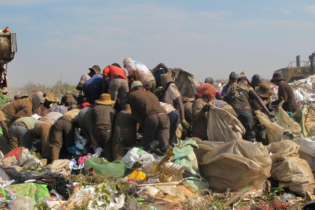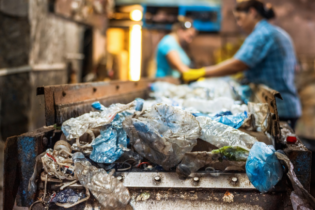When landfills burn, toxic smoke is given off which can negatively affect the health of all those living down wind. Fires can be caused by a variety of catalysts, including arson, hot ash deposits, and lightening.
That covers fires that occur on the surface of landfills but combustion below the surface happens for more complex reasons. Spontaneous combustion can occur as a result of a number of chemical and thermal catalysts and may result from the natural decomposition process of some wastes. Underground forces can be difficult to detect but eventually become obvious due to landfill settling over time. Where air quality levels are monitored, stations may detect increased carbon monoxide levels. Gas extraction odours may exhibit a burning smell and the gas extracted from wells will start to reach excessively high temperatures. Poisonous gasses Harmful emissions that can result from landfill fires may include but are not limited to: formaldehyde, hydrogen cyanide, hydrogen sulfide and nitrogen oxides. Particulate matter in the smoke can also have a negative impact on respiratory health conditions. In order to properly control a landfill fires, the cause must first be determined. Options for fire control include excavation, overhauling, burying, injecting nitrogen or carbon dioxide, ground freezing, water injection, and foam-based methods.Burning tyres produce large amounts of oil and smoke, making landfill fires more challenging to extinguish and can give rise to the need for more concerted fire management efforts
Prevention better than cure The best way to manage a landfill fire is to prevent one from happening in the first place. For example, landfill sites can be built with engineered fire suppression technology. This may include an electronic monitoring system for detecting fires and hazards at the outset. Fires are most prevalent in dry seasons, especially in areas experiencing drought. Waste managers and landfill operators can minimise risks by arranging regular meetings with local fire departments to ensure they are equipped to handle the extra precautions necessary for dousing landfill fires. Because South African law prohibits the dumping of hazardous waste at regular landfill sites risks of chemical fires are lowered. A further measure for preventing fires is to compact landfill waste sufficiently so there isn’t enough air underground to feed the flames.







